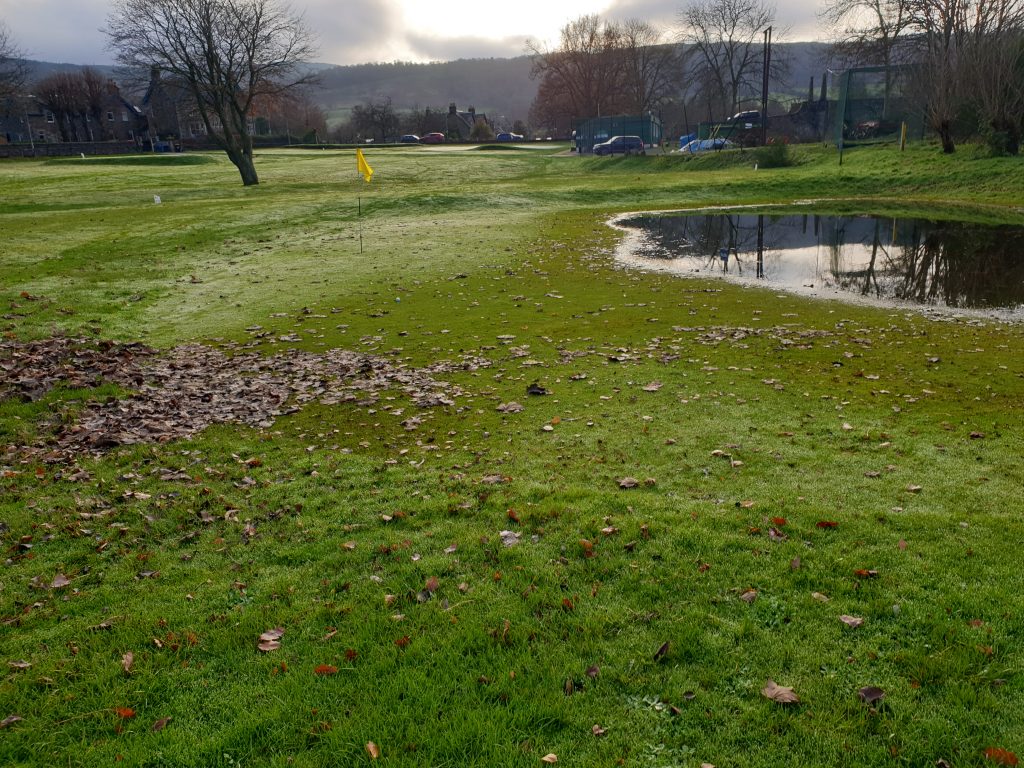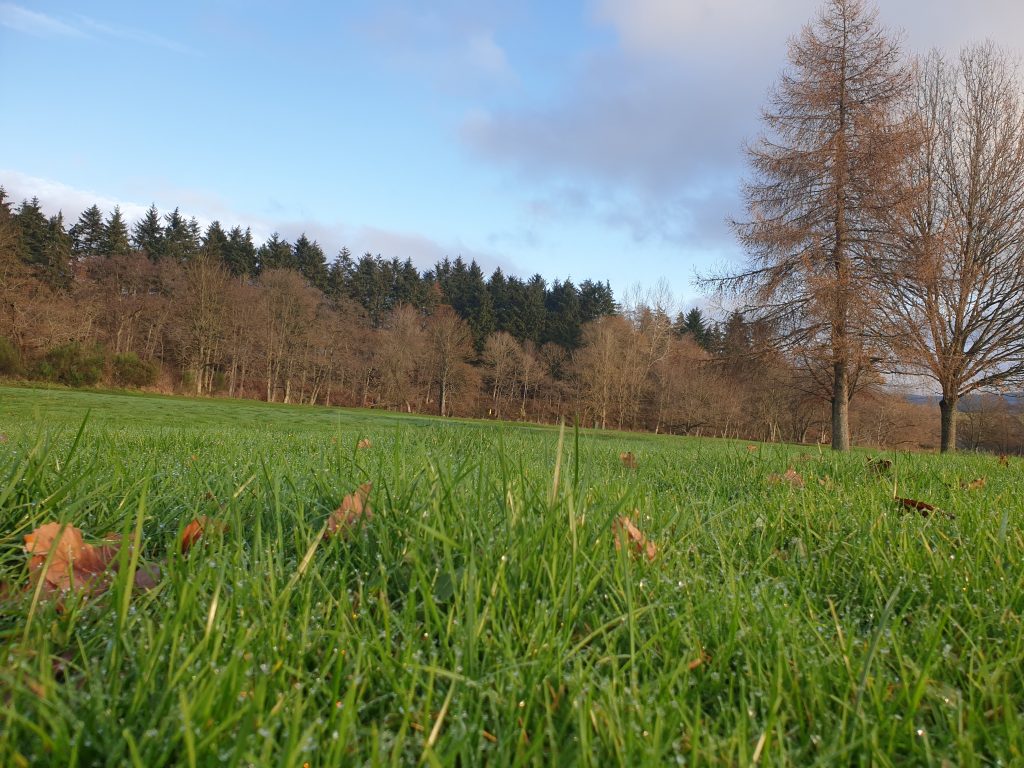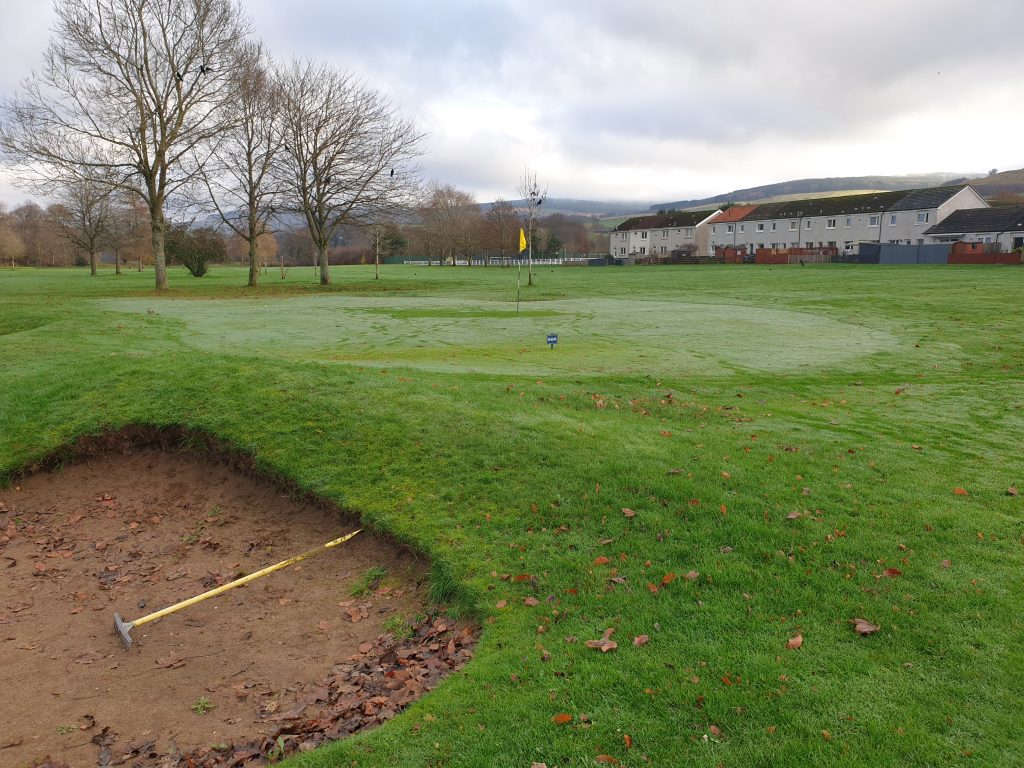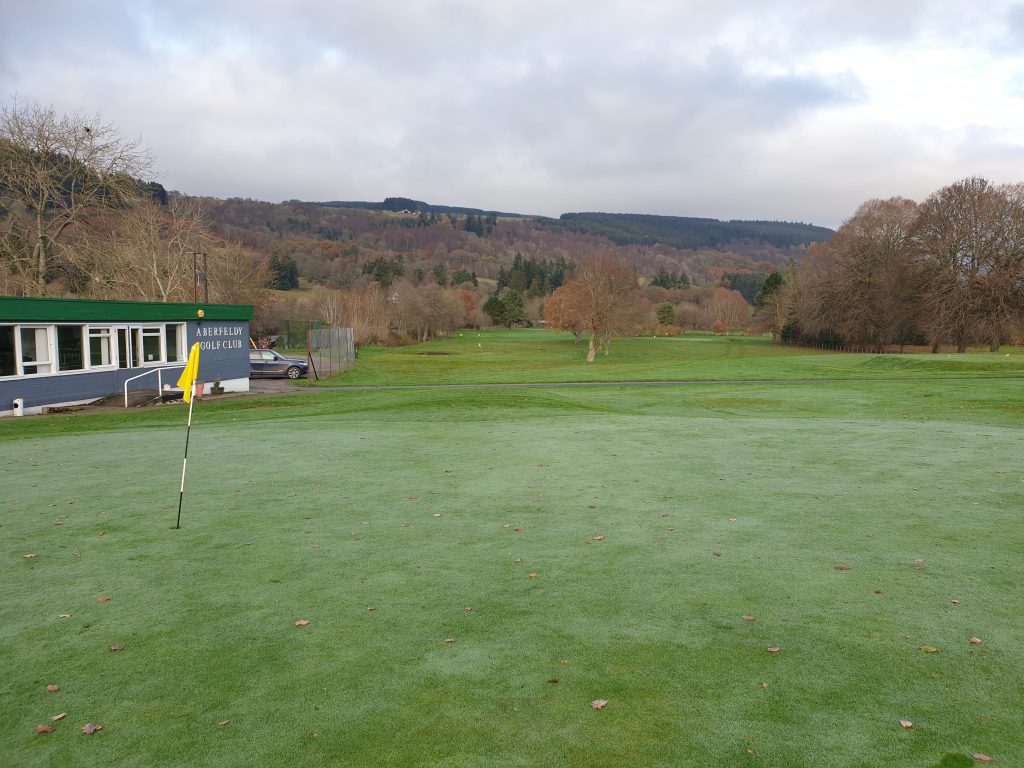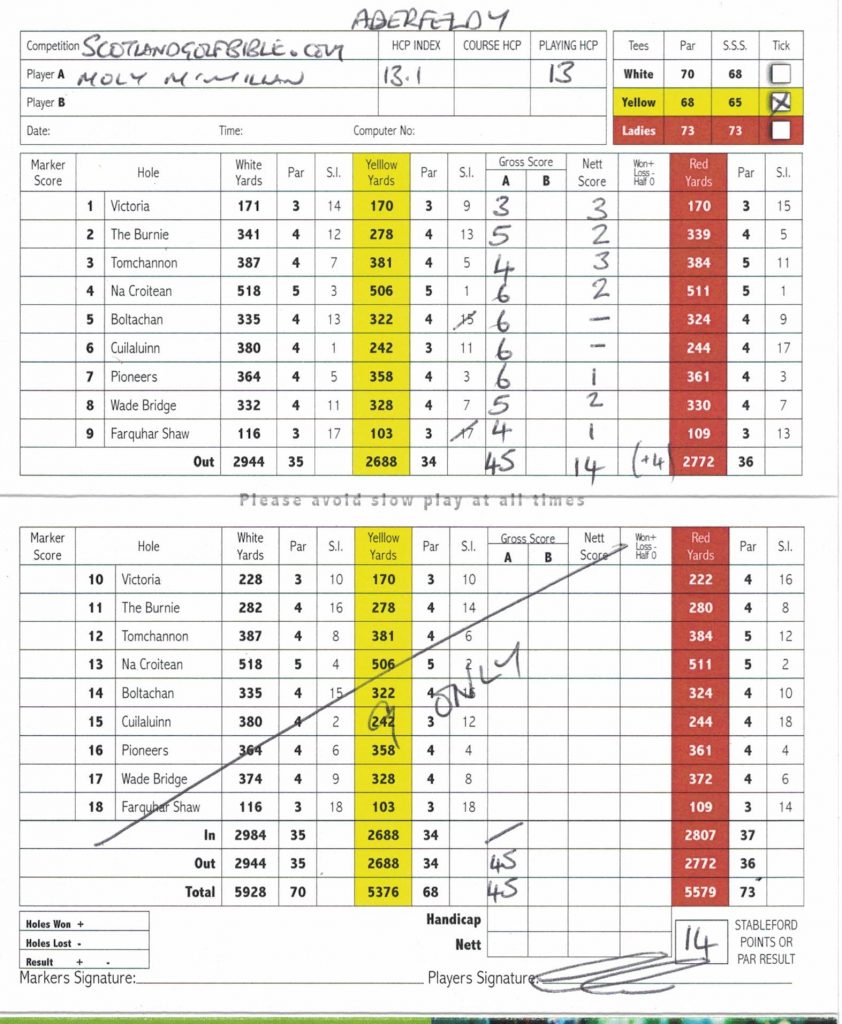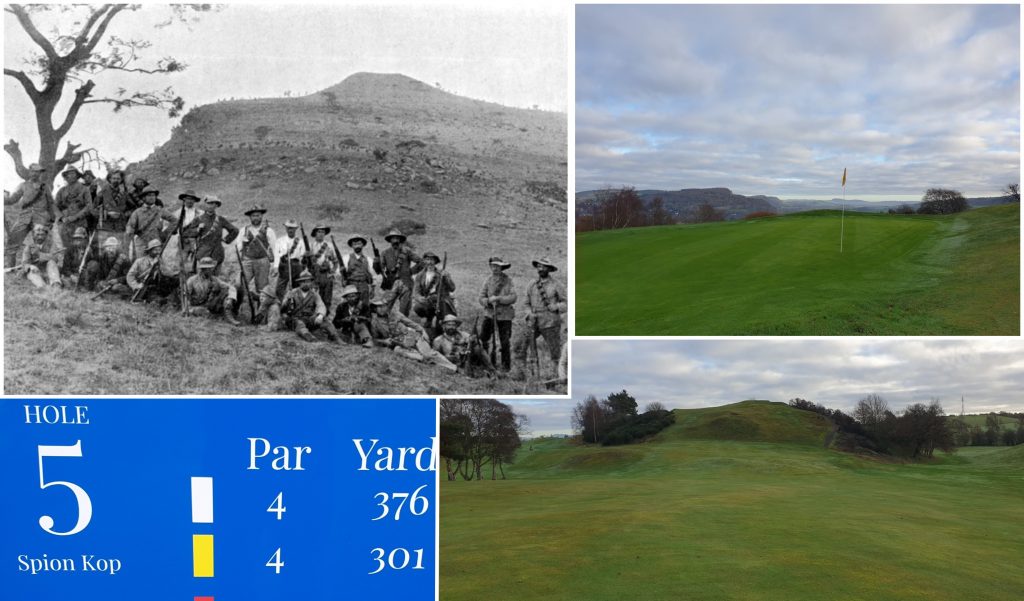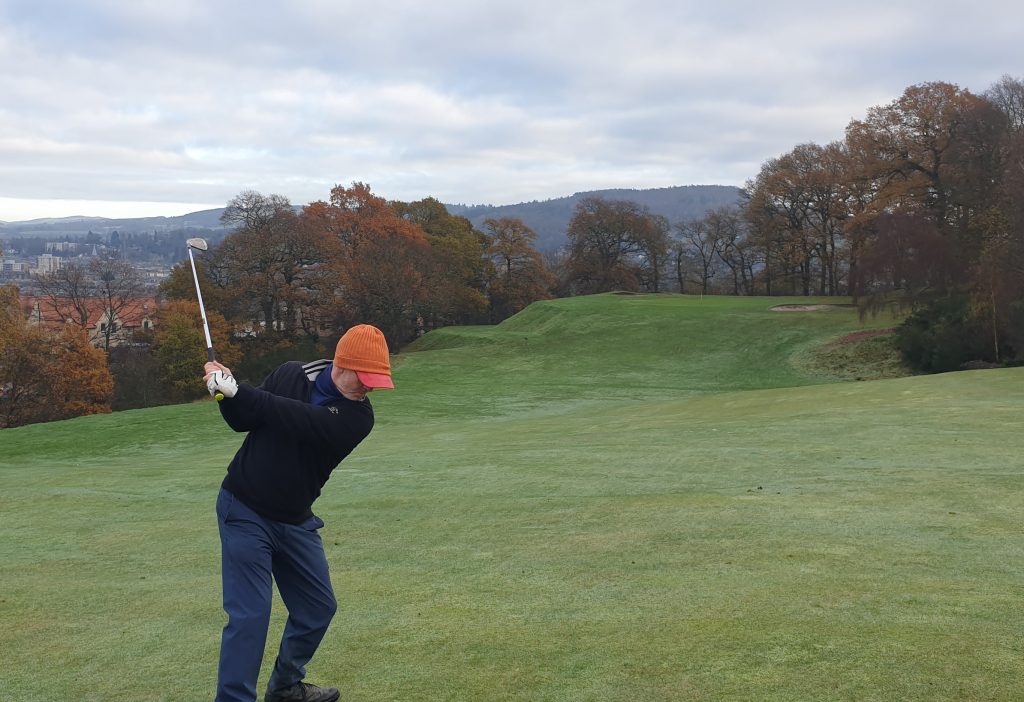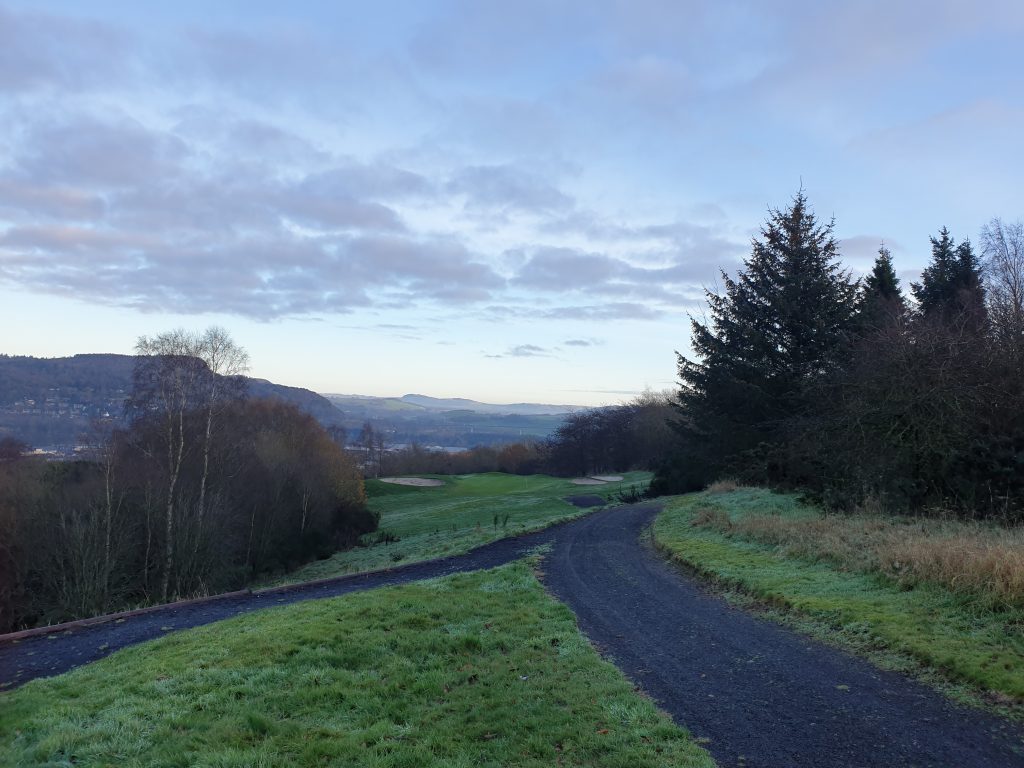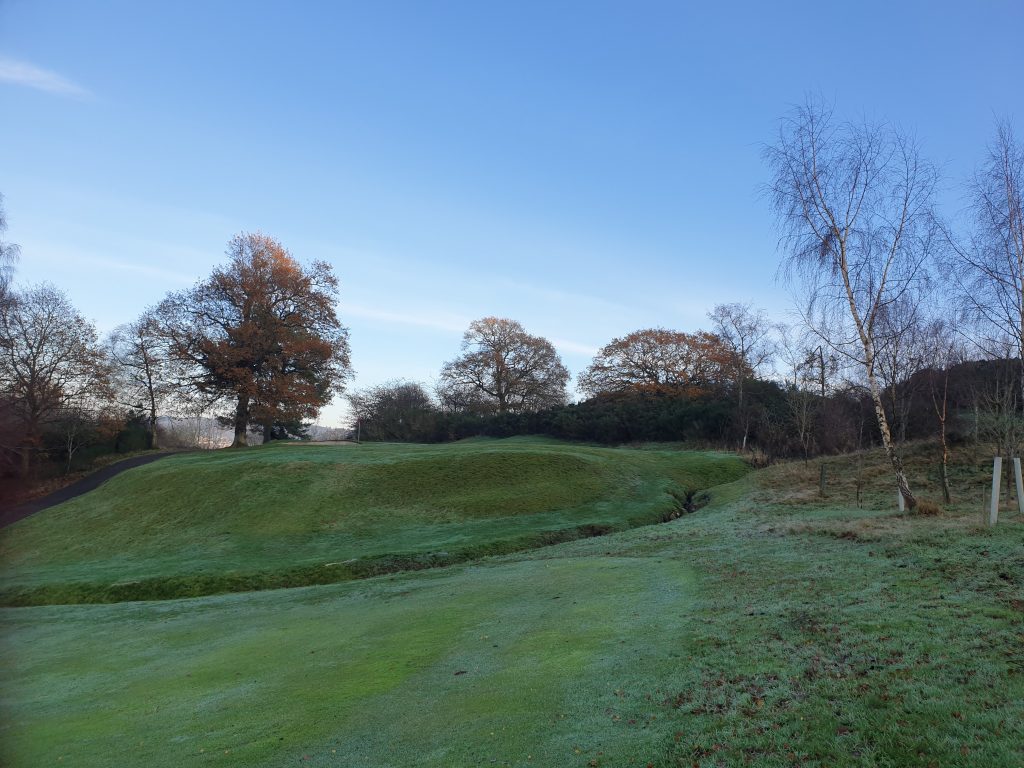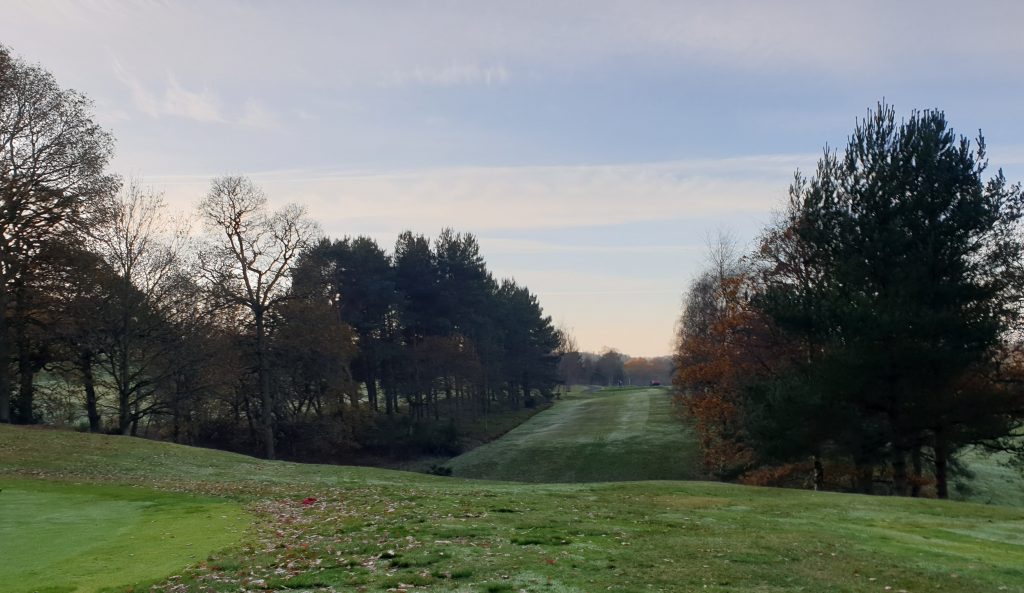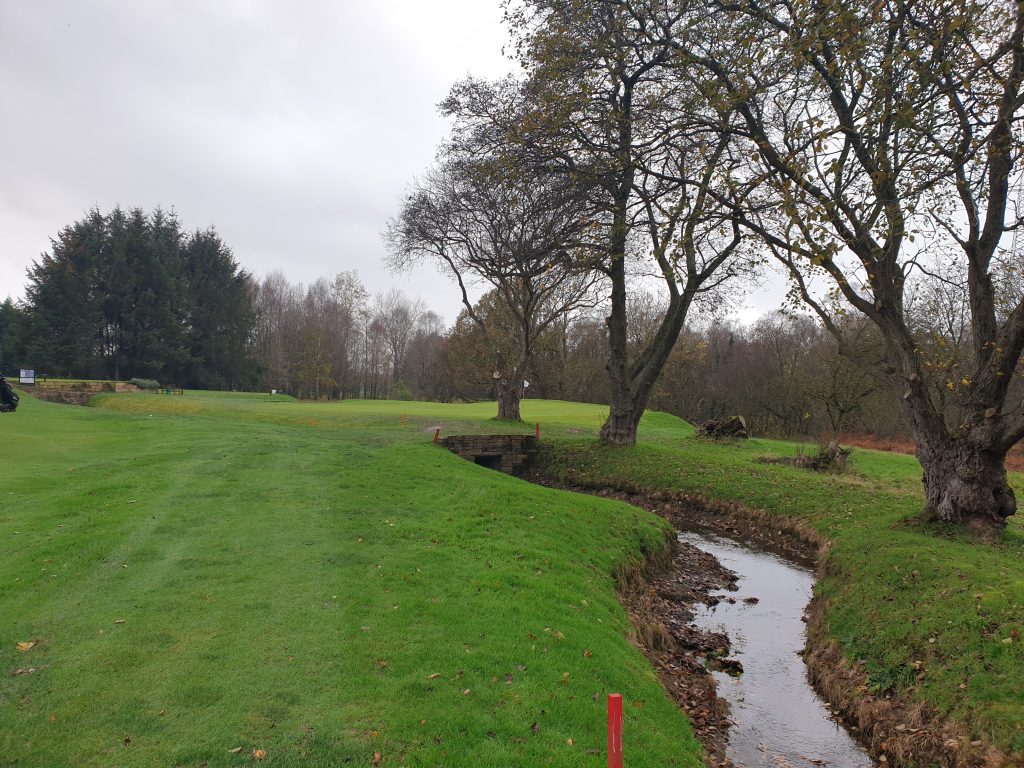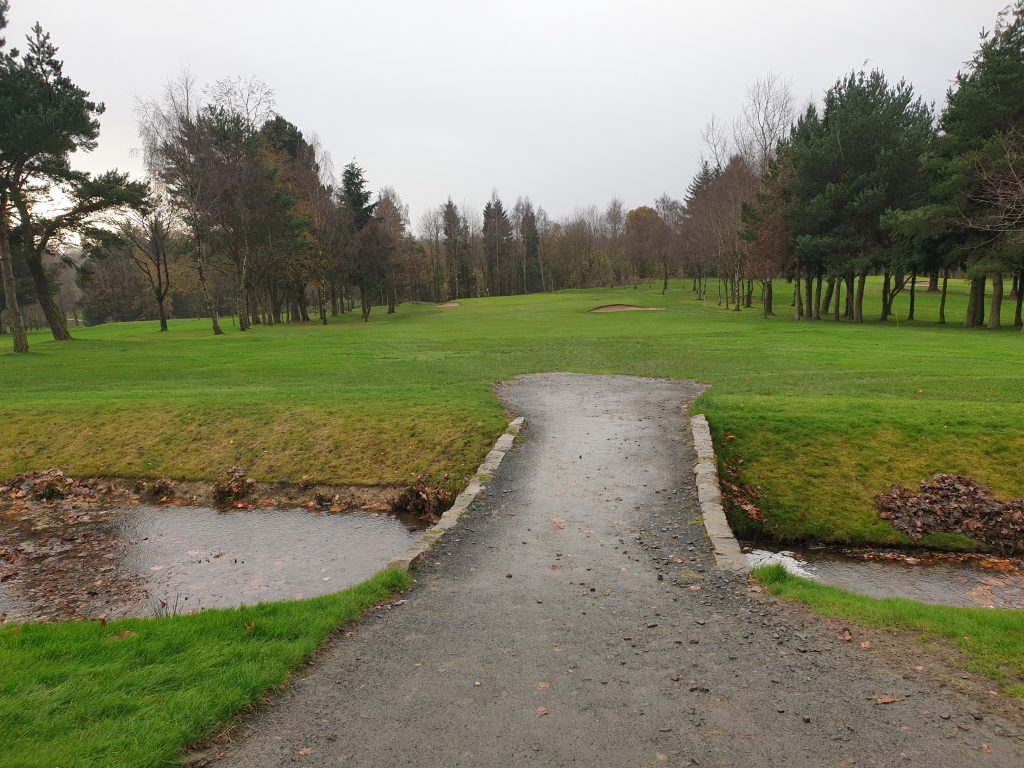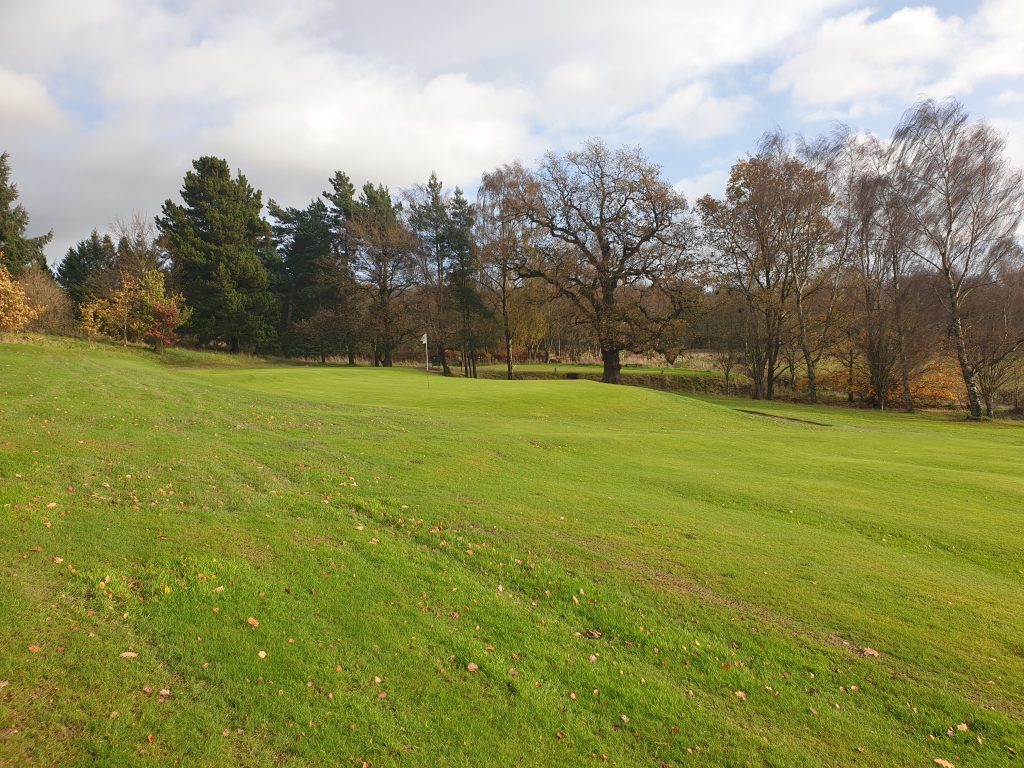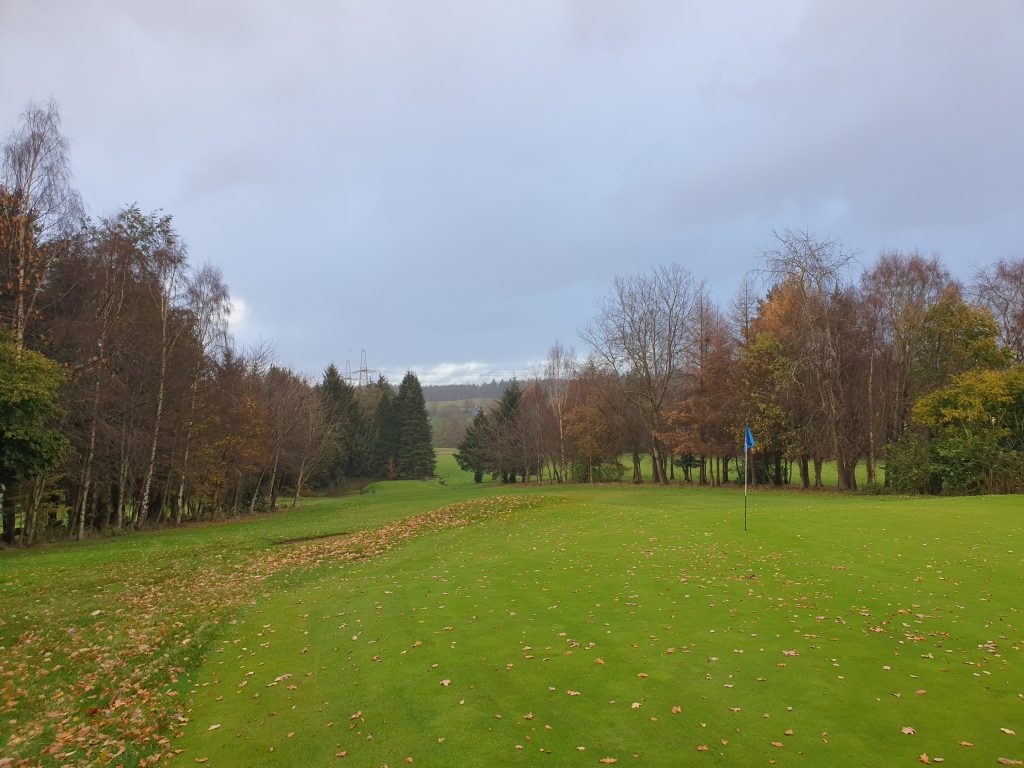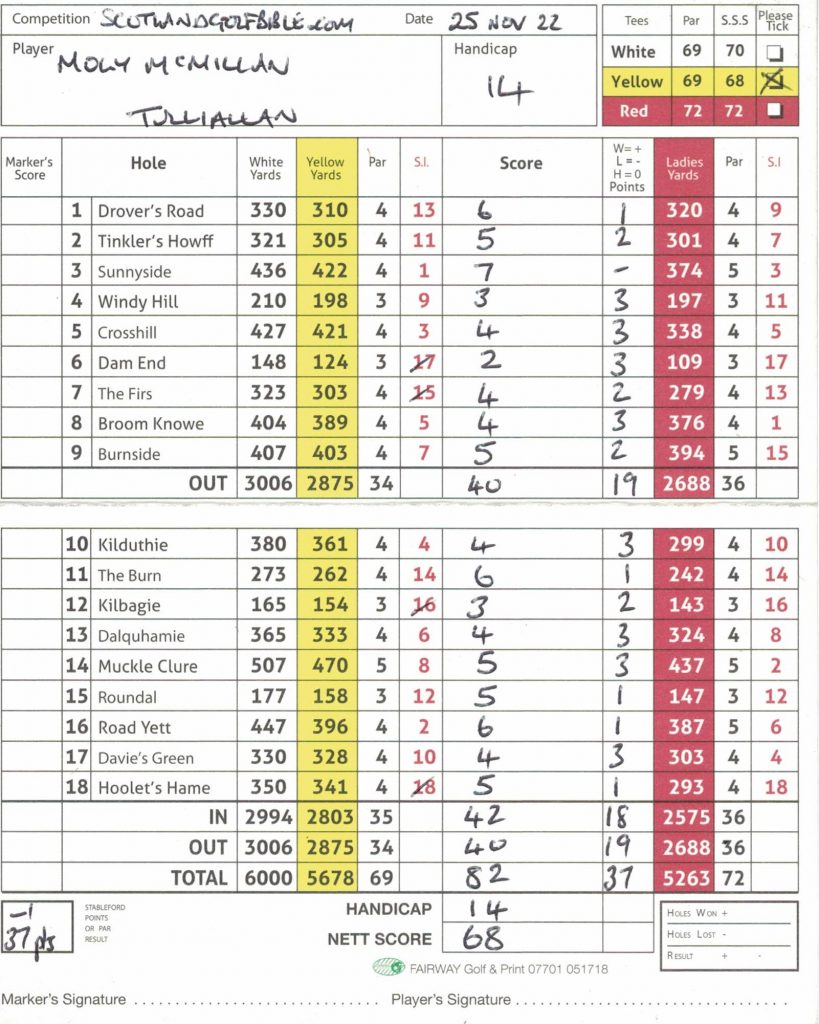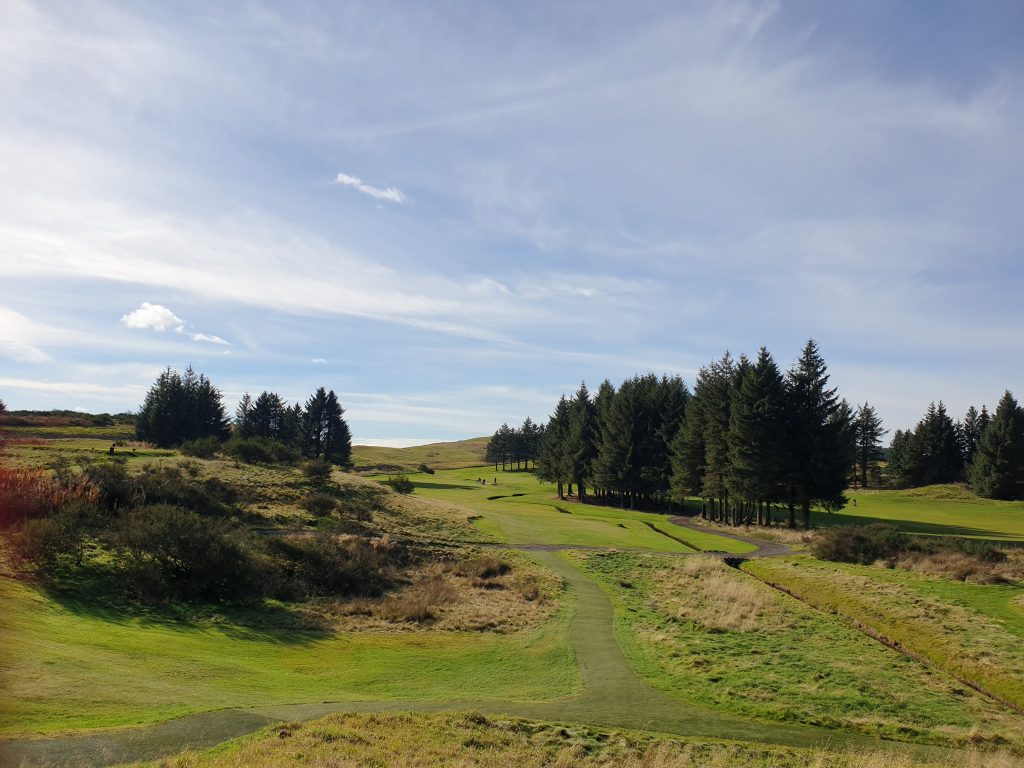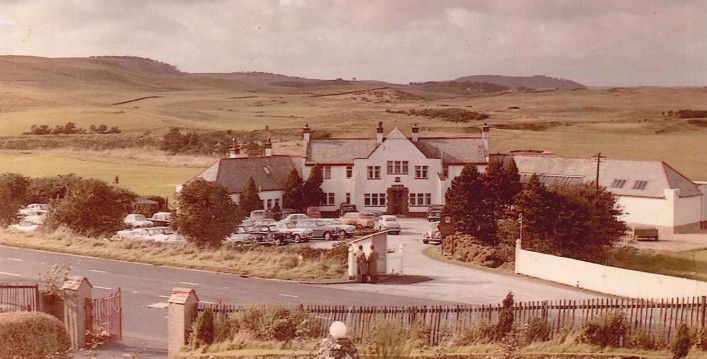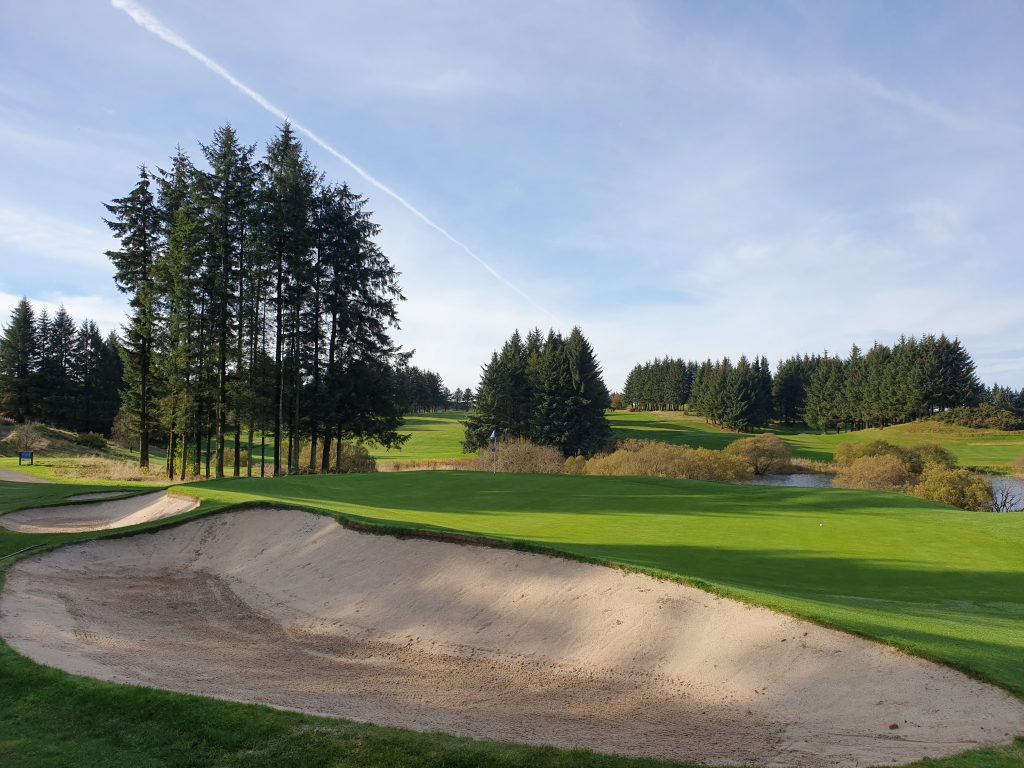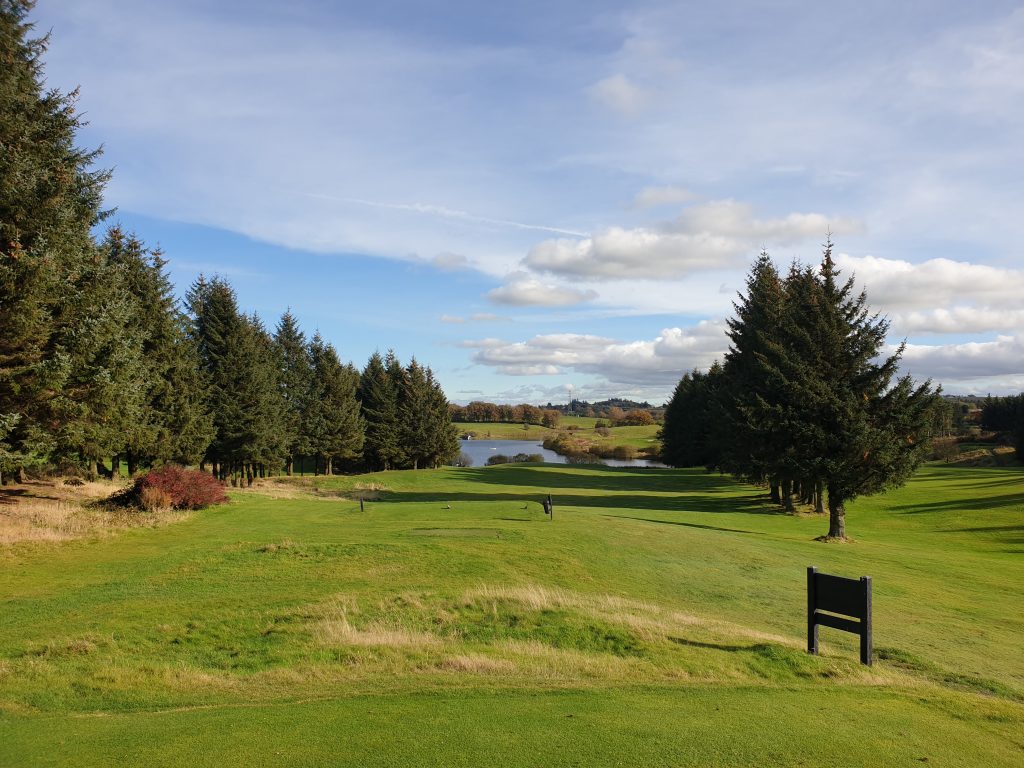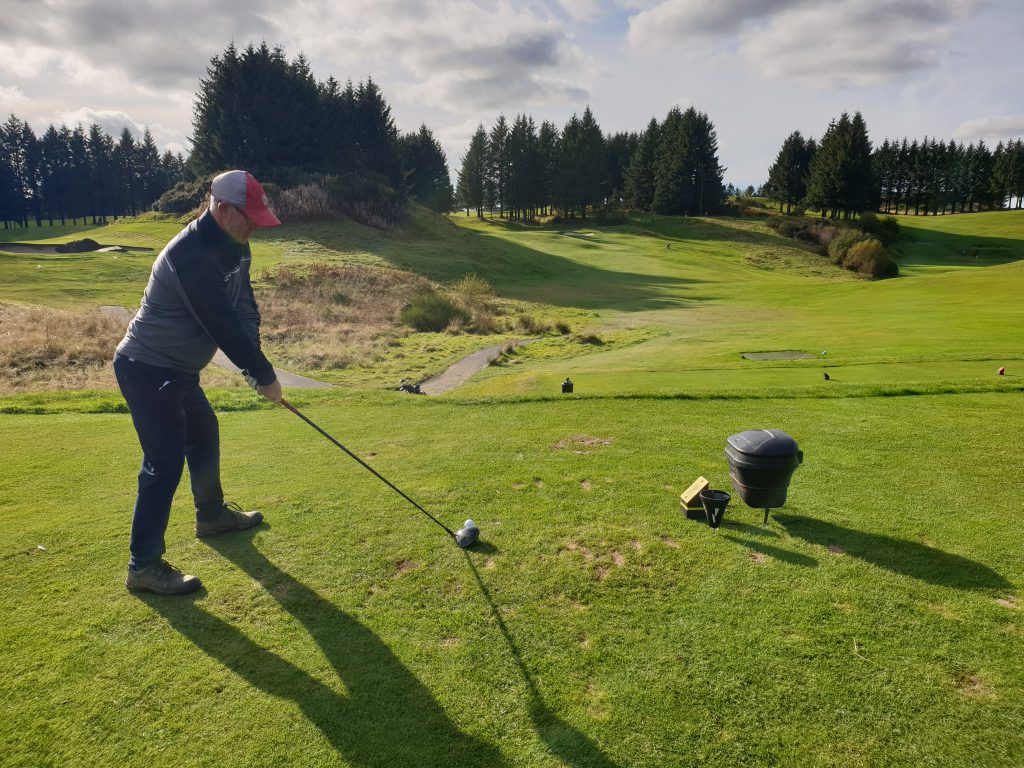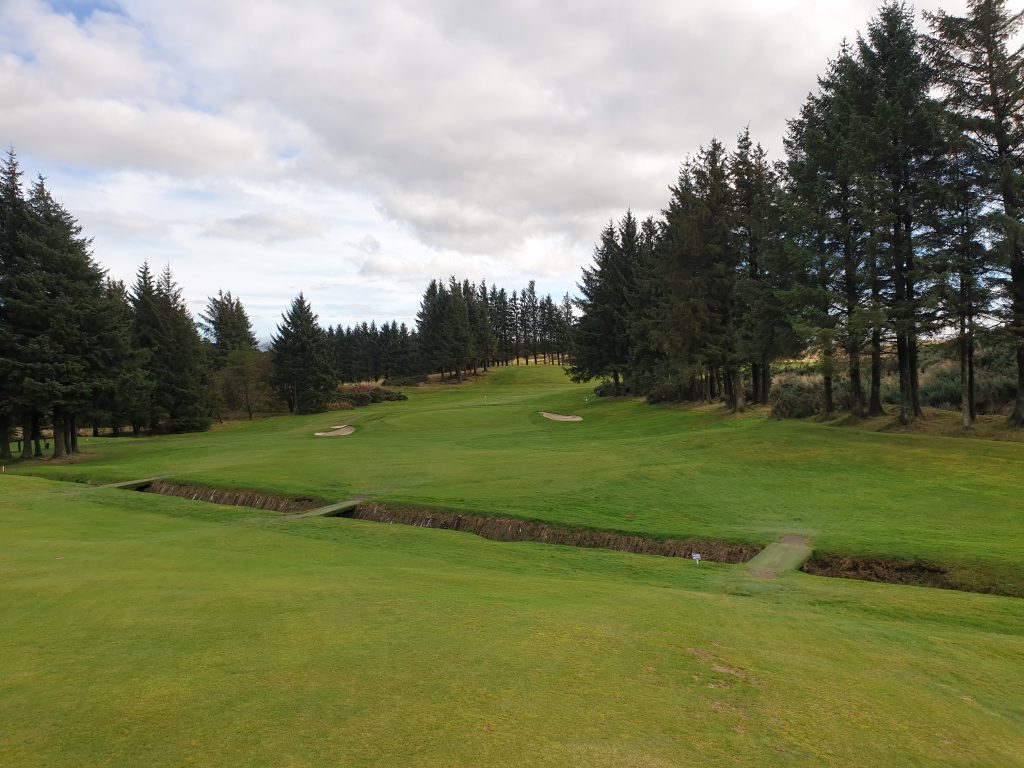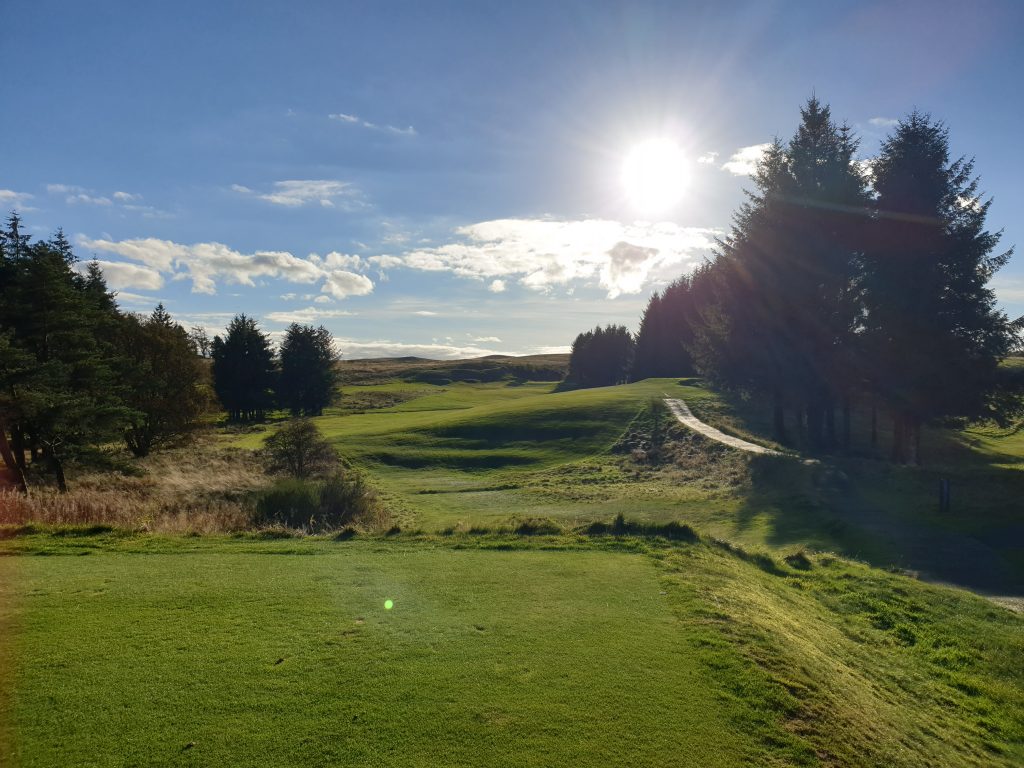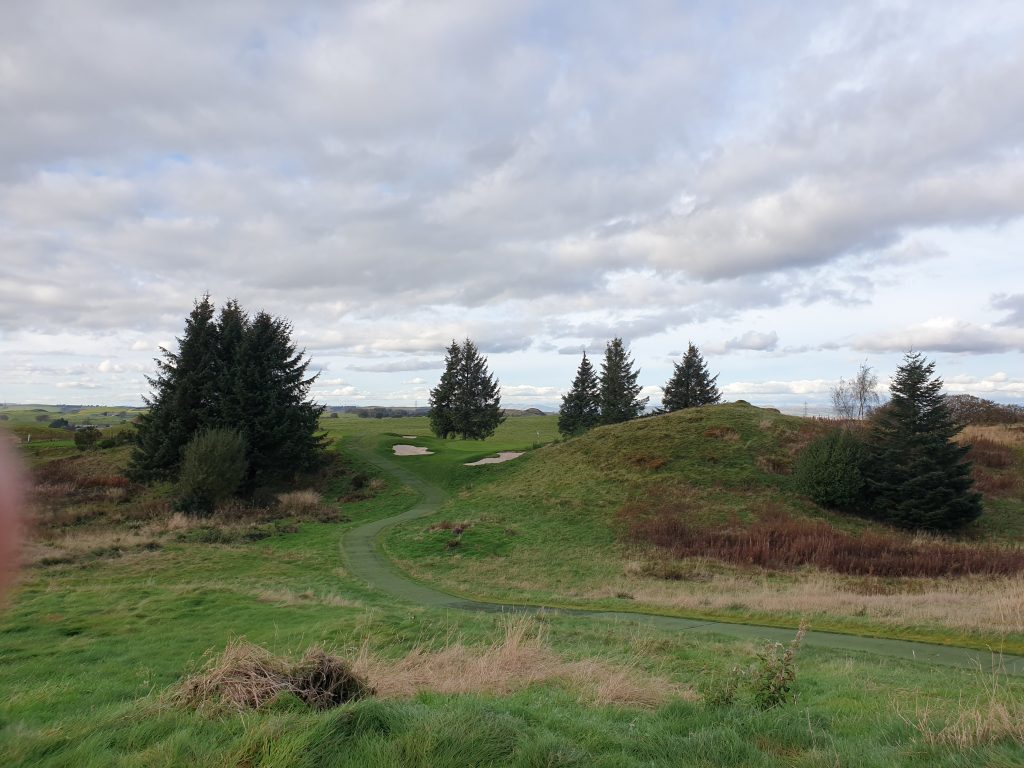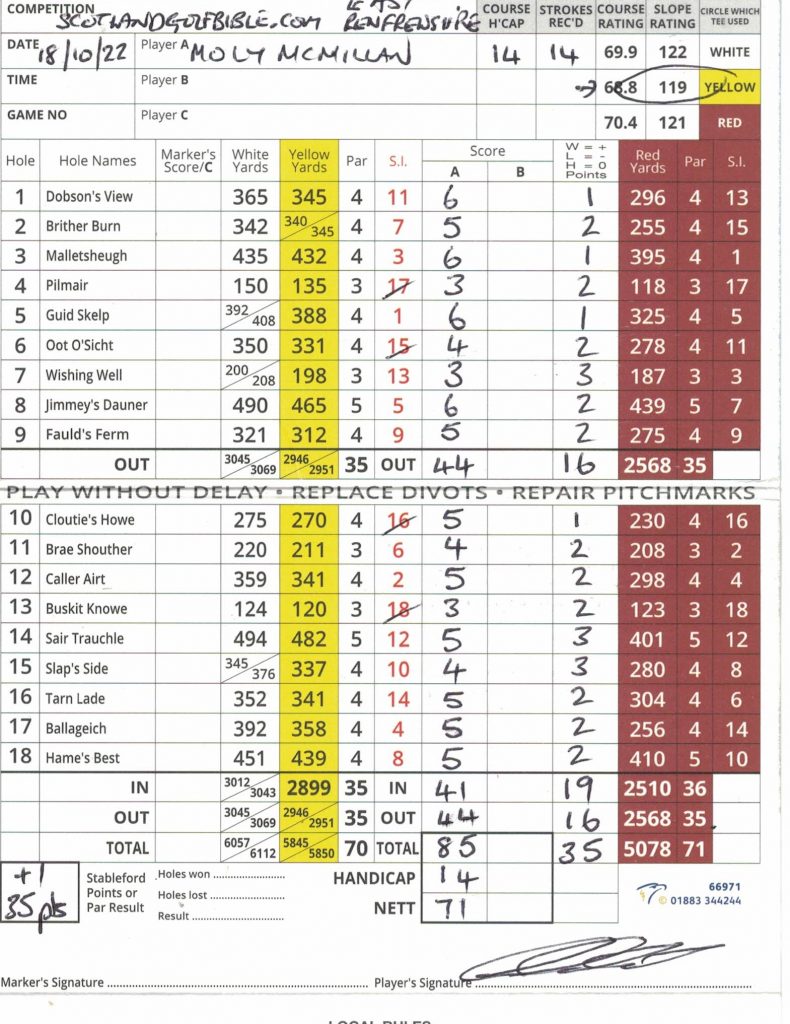Better Days
Value 1/5
I played the three 9-hole courses of Aberfeldy, Mains of Taymouth and Strathtay on the same wet Highland Perthshire day. This is important context, because whereas Mains of Taymouth and Strathtay were well presented, Aberfeldy was in awful condition.
All three courses sit along a 12 mile stretch of the River Tay, between Kenmore and Grantully, and experience the same climate. It’s evident Aberfeldy GC is struggling to maintain the course with its small membership, with volunteering a critical resource.
Finding the course in such a bad state, especially from the 2nd hole onwards, leaves me somewhat uncomfortable in writing a review, as I’m sure there will be reasons why the course was effectively unplayable. Nonetheless, I’m committed to writing what I found on the day; all it would have taken by the club was a “course closed” sign on the first tee.
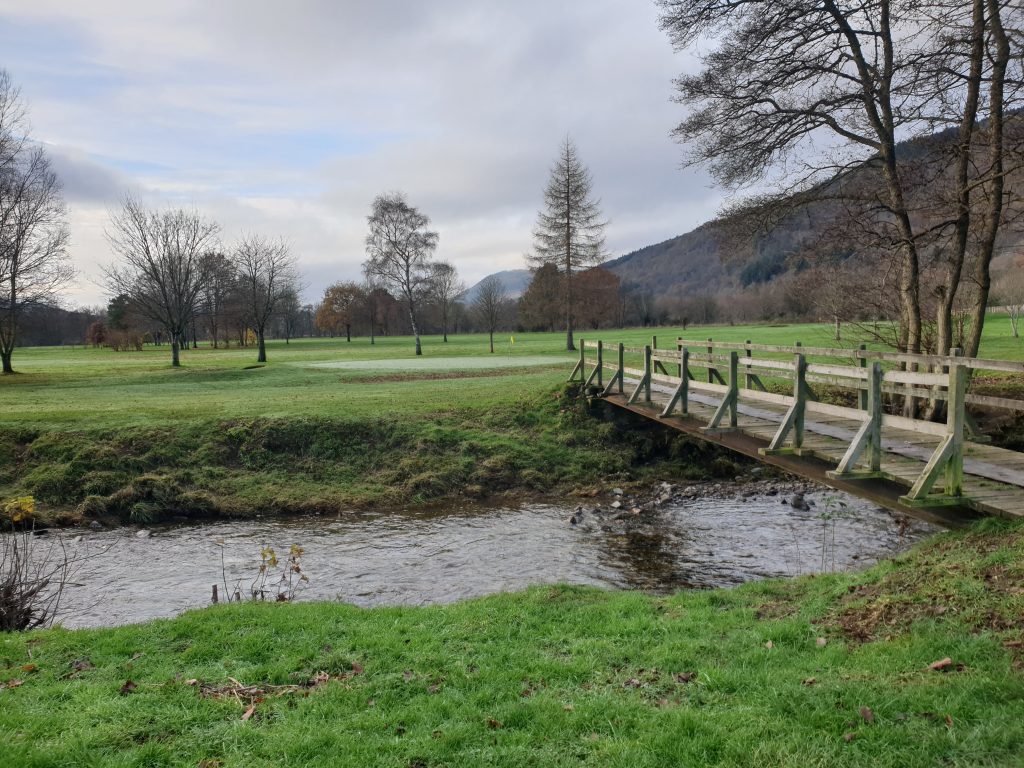
Golf in Aberfeldy, much like in Scotland overall, is a story of expansion and contraction; the websites Missing Links and Breadalbane Heritage collectively tell Aberfeldy’s story, but there are gaps likely created by the old matter of ‘club’ versus ‘course’. There is also a book, intriguingly “Never an Old Tin Hut”, by local historian Jack Rees, published to mark Aberfeldy’s centenary in 1995.
In summary, Breadalbane GC and course, was founded in 1895 at its current location and would later be renamed Aberfeldy GC. But there are records of 2 other courses as early as 1891, in nearby Weem and in a place called Welar, the latter course can still be made out on Google Maps just north-east of Camernay. The current very flat course was characterised by sharing its ground with cows for many years.
The course expanded to 18 holes in 1995 including 6 holes north of the river, but was returned to 9 holes in 2016, due to the drop off in demand.
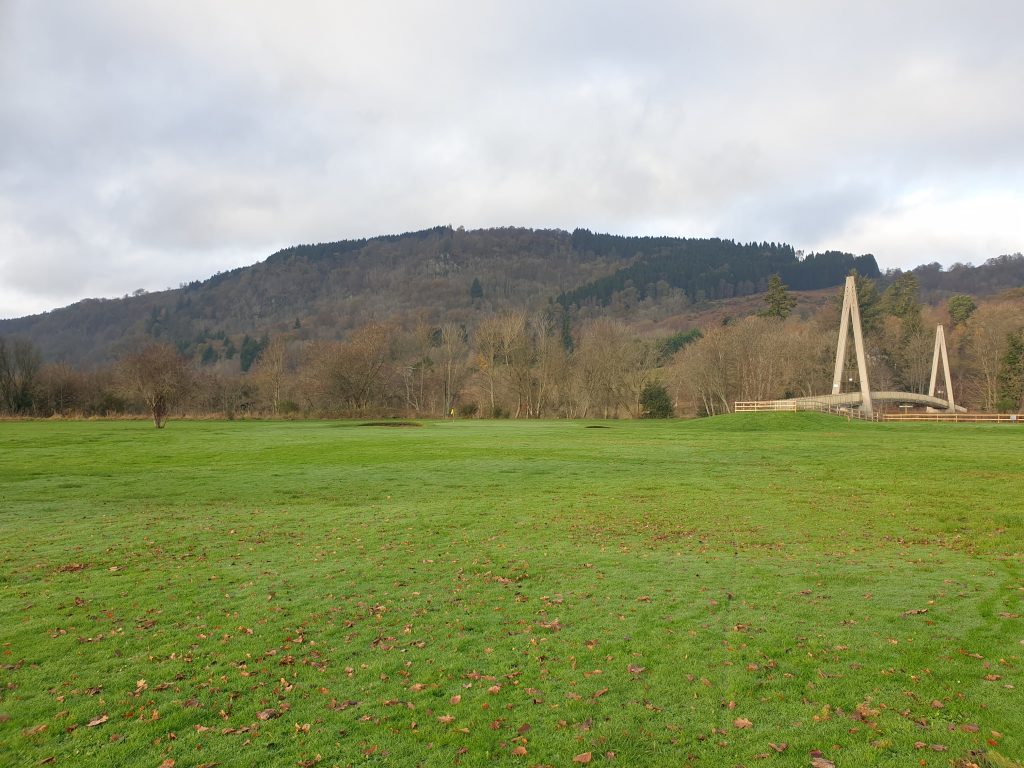
The pictures tell their own story about the course condition. With much better courses nearby, one can’t see the long term survival of Aberfeldy GC. The local interest in golf can also be gauged in the lack of business sponsorship, even although Aberfeldy is base to one of the great whiskey distillers, Dewars. Plus, Breadalbane Academy, Highland Perthshire’s main school, is only 500 yards away, yet sadly has no mention of golf within its sporting curriculum.
This was a sad day for me, but I’m sure many people have fond memories of Summer golf in Aberfeldy. I thought the course condition when I played might be reminiscent of the course in the late 1890 – ever an optimist.
Round List Price £15. Actual Paid £10 (Winter rate).
Moly’s Score – 45 for 14 points (off 13)
Course/Slope Rating (yellow) nk/~65
Course Type: Parkland
Par 35 ( 1 par 5s, 5 par 4s, 3 par 3s)
Distance (yellow): 2688 yards
